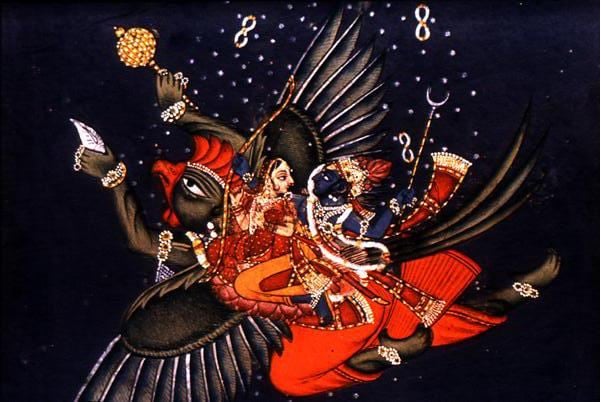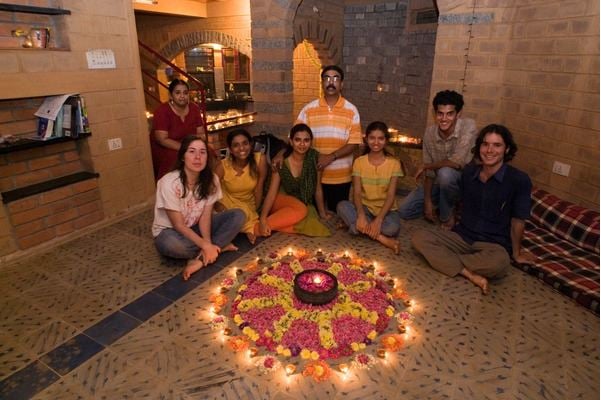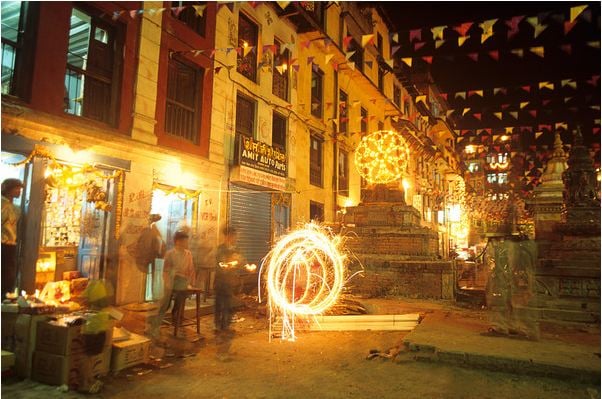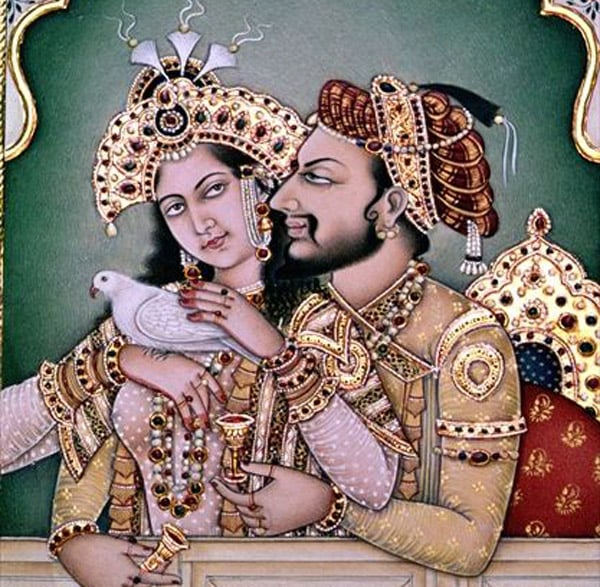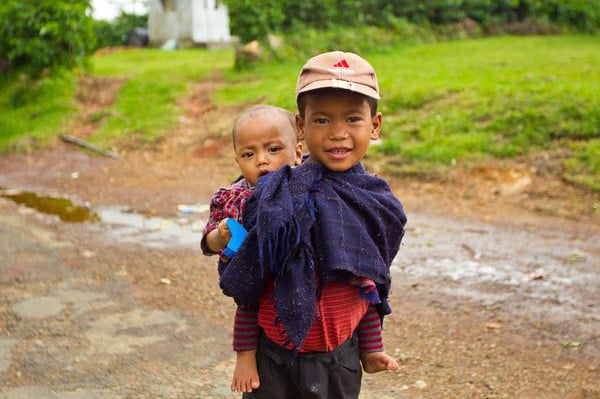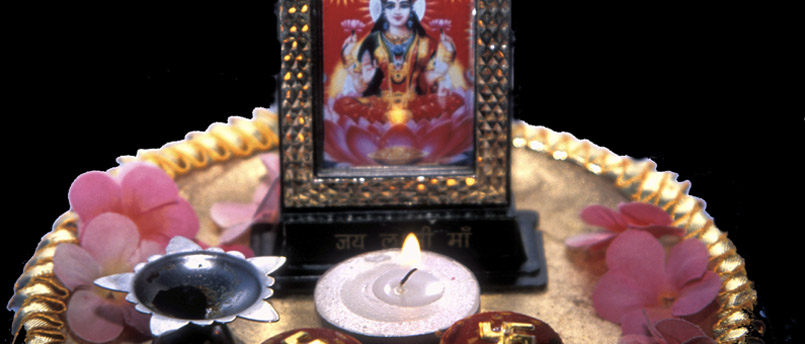
Illuminating India: Diwali and the V&A
This autumn the V&A will present a series of exhibitions and events that will delve into the rich and varied culture of South Asia, past and present. The India Festival marks the 25th anniversary of the opening of the Museum’s Nehru Gallery, which displays some of the most important objects from the V&A’s South Asian art collection produced between the 16 – 19th centuries.
The V&A’s programme also ties in with the upcoming Diwali celebrations and Hindu New Year. Diwali is an ancient Indian festival of lights, commemorated by millions of Hindus, Sikhs and Jains across the world. This year, the 5-day festival will be taking place from the 11th November, however London’s Trafalgar Square will be celebrating it early on 11th October.
In light of all the festivities, discover more about India’s biggest and brightest party:
Origins
The Diwali or Festival of Lamps, from ‘India Ancient and Modern’, 1867, William ‘Crimea’ Simpson (1823-99) / Private Collection / The Stapleton Collection / Bridgeman Images
Diwali dates back to ancient times, as a festival after the summer harvest. It is mentioned in Sanskrit scriptures from the second half of the 1st millennium AD, and is believed to have been described in text from an even earlier era. Hindus in some regions of India associate Diwali with the legend of Yama and Nachiketa; a story about right versus wrong, transient wealth versus true wealth, and ignorance versus knowledge.
The word ‘Diwali’ is derived from the Sanskrit fusion word ‘Dīpāvali’, and means a ‘series of lights’. Its celebration include millions of lights shining from housetops, doors and windows, temples and other buildings in the communities where it is observed. The lamps (‘diyas’) symbolically represent parts of the sun – the cosmic giver of light and energy to all life.
Day 1: Dhanteras
Vishnu and Lakshmi Riding on Garuda, Indian School / Private Collection / Ann & Bury Peerless Picture Library / Bridgeman Images
The festival kicks off with Dhanteras, where houses are cleaned, renovated and decorated. For some, it marks the birthday of Lakshmi – the Goddess of Wealth and Prosperity, and the birthday of Dhanvantari – the God of Health and Healing. On the night of Dhanteras, diyas are ritually kept burning all night in honour of Lakshmi and Dhanvantari. It is believed that during Diwali, Lakshmi roams the earth, and the lights invite her in.
Dhanteras is also a major shopping day, especially for gold or silver articles. Merchants, traders and retailers prepare for this day by stocking up goods and putting articles on sale.
Day 2: Naraka Chaturdasi
Nepal: Simple rangoli decorations laid out for the Tihar festival (Nepalese equivalent of Diwali) in a Kathmandu Valley temple / Pictures from History/Chaweewan Chuchuay / Bridgeman Images
Indians and Westerners celebrating Diwali together with a Rangoli on the floor (photo) / © Chinch Gryniewicz / Bridgeman Images
On the second day of festivities, also known at Choti Diwali, people put up house decorations or create colourful floor patterns named rangoli. Rangoli is an Indian folk art in which vibrant patterns are made using coloured rice, sand, dry flour, or flower petals. It is thought to bring good luck and also acts as a sacred welcoming area for the Hindu deities.
In addition, women also decorate their hands with beautiful henna designs and in some regions special bathing rituals are held using fragrant oils.
Day 3: Lakshmi Puja
Diwali Festival, Katmandu, Nepal / © Animas Riverrun Images / Bridgeman Images
This is the main festive day. As the evening approaches, people put on their best or new outfits and light the diyas. Again, people make a spiritual connection to Lakshmi, and her blessings are invoked for a good year ahead.
Mothers are recognised in particular, as they are seen to embody a part of Lakshmi. Significant relationships and friendships are also acknowledged throughout the day, by visiting relatives and friends, and exchanging gifts and sweets.
In the late evening, people go outside and celebrate by lighting fireworks. While the children play with sparklers and smaller fireworks, the adults get to enjoy sutli bombs, rockets, chakras and more impressive light displays. All in all the fireworks signify both the celebration of Diwali as well as symbolically chasing away evil spirits. Afterwards, people enjoy a family feast, socialising and sweets.
Day 4: Padwa, Balipratipada
Shah Jahan (1592-1666) and his Wife, Arjumand Banu Begum (d.1631) Mumtaz-i Mahal, Indian School / Private Collection / Dinodia / Bridgeman Images
This day ritually celebrates the devotion and love between a wife and husband. The husbands are expected to give thoughtful or special gifts to their spouses, and in many areas newly married daughters are invited to a special meal.
Day 5: Bhai Duj, Bhaiya Dooji
A young Indian boy carrying his toddler brother on his back/ Mike Theiss / National Geographic Creative / Bridgeman Images
The final day of the festival translates in English as ‘brother’s second’, and in Nepal, it is the major day of Diwali. It celebrates siblings and the love and lifelong bond between a sister and a brother. Female family members perform a puja (an act of showing reverence to an aspect of the divine) on behalf of their brothers, give gifts and share food. In historic times brothers would travel to meet their sisters and celebrate with the bounty of the seasonal harvests.
Find out More
The V&A’s India Festival will comprise of several exhibitions during the autumn season:
Musical Wonders of India, 16 Sep – 31 Oct 2015
The Fabric of India, 3 Oct – 10 Jan 2016
Bejewelled Treasures: The Al Thani Collection, 21 Nov – 28 Mar 2016
Images and Licensing
Browse more images from India. Contact us at uksales@bridgemanimages.com for more information on licensing and clearing copyright.


